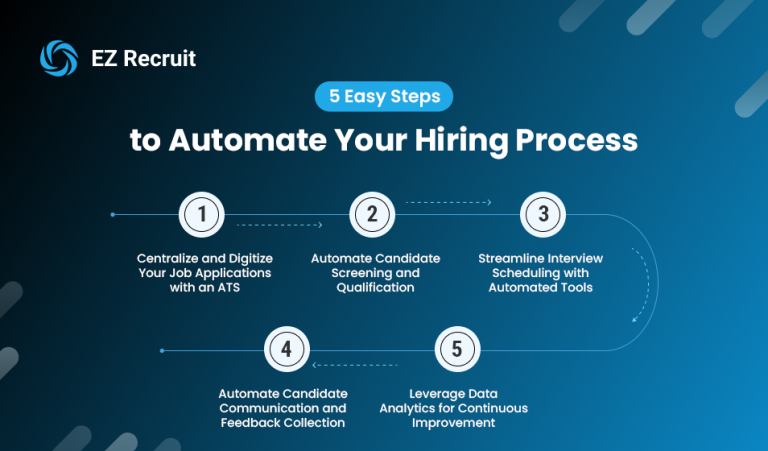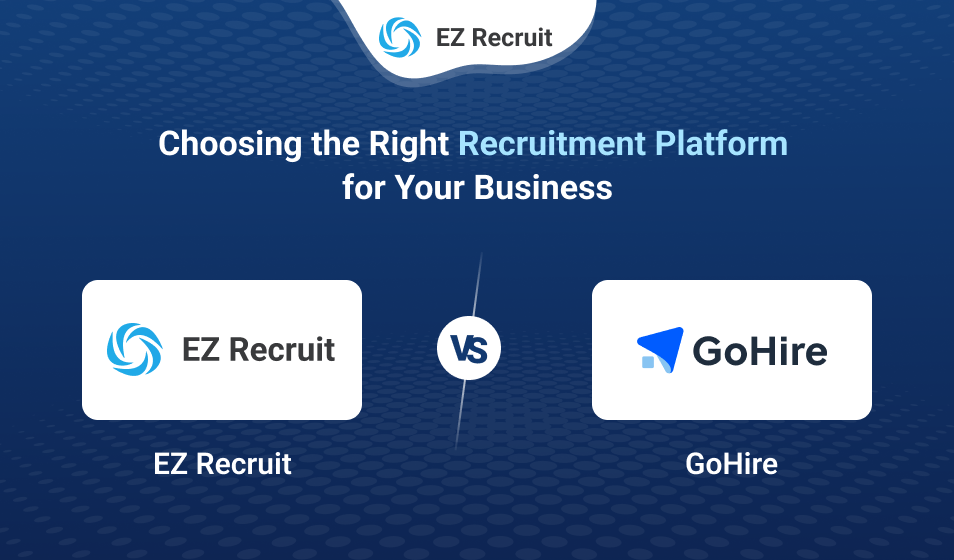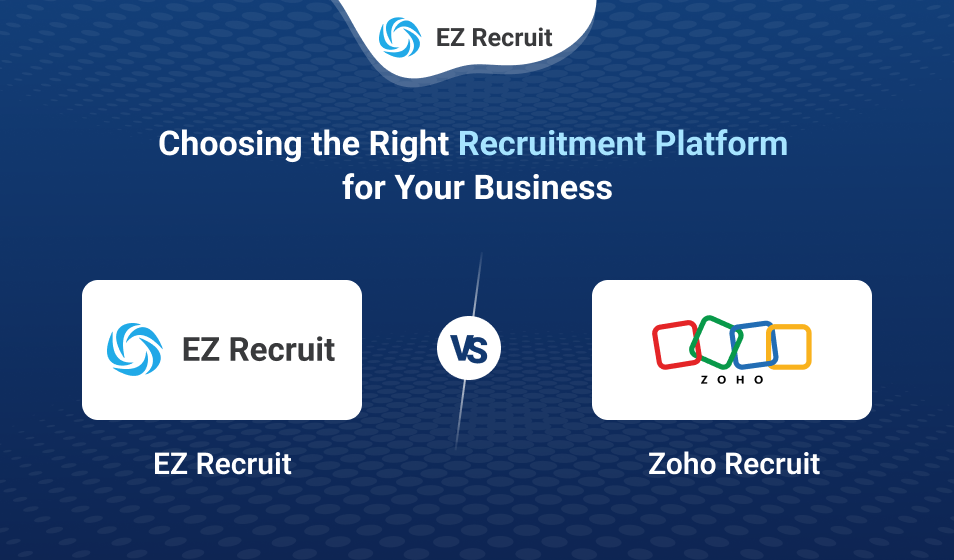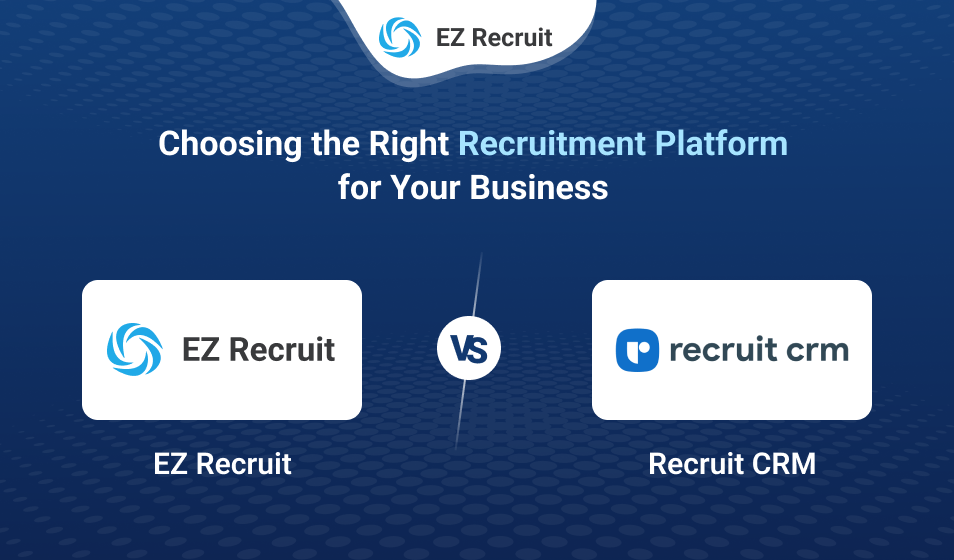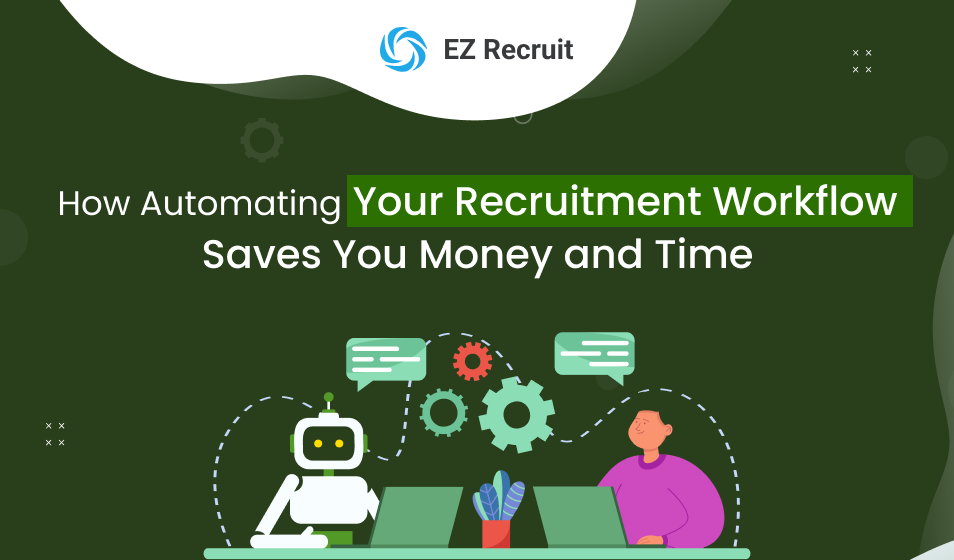Recruitment is perhaps the most important function of any enterprise. But for most companies, it is painfully labor-intensive. Time-sapping and inevitably inconsistent activity. Are you buried under a mountain of resumes, unable to coordinate interviews? Or finding it almost impossible to monitor candidate development? If your recruitment team spends hours on administrative activities rather than interacting with best-of-breed talent, you’re not alone. The inefficiencies in the conventional hiring process can result in tardy hires. Loss of opportunities to get hold of the best candidates, and a heavy drain on your resources.
This blog will walk business decision-makers and professionals through five simple steps to automate the hiring process. Achieving enhanced efficiency, improved candidate experiences, and eventually, better hires.
Step 1: Centralize and Digitize Your Job Applications with an ATS
The first and most crucial step is to move away from spreadsheets and email inboxes. An Applicant Tracking System (ATS) is the foundational technology for hiring automation.
How it benefits you: An ATS is a single repository for all your job applications. Recruiters apply directly from your career page. And their data gets automatically populated and saved in a database that can be searched for later. This saves time from entering data manually. Minimizes errors and offers one source of truth for candidate data.
Practical Tip: Choose an ATS that has customizable application forms. Simple website integration and powerful search and filtering features. Most modern ATS solutions also have AI-based resume parsing. Which can automatically retrieve key information from resumes and populate candidate profiles.
Step 2: Automate Candidate Screening and Qualification
When applications begin pouring into your ATS, the issue then becomes screening them to find the best candidates. Manual screening is outrageously time-consuming and frequently not very efficient.
How it helps: Automation has the ability to make screening much faster and more accurate.
Pre-screening Questions: Incorporate primary pre-screening questions directly into your application form. The ATS will automatically screen out any candidates who don’t have your minimum requirements. (e.g., specific certifications, years of experience).
Keyword Matching: Allow the power of the ATS to match resumes with exact keywords that match the job. Allowing you to quickly recognize highly qualified applicants.
Automated Assessments: Build pre-employment tests into your workflow. Candidates automatically take these, and the results are reported back to their ATS profile. Offering objective criteria for your evaluation.
Practical Tip: Before posting the position, clearly define the screening requirements. Setting up your automated filters and evaluations will be much easier and better if you do this.
Step 3: Streamline Interview Scheduling with Automated Tools
Interview scheduling is a well-known time-waster. It can be extremely difficult to coordinate the schedules of interview panels, hiring managers, and candidates.
How it helps: Automated scheduling tools solve this issue.
Calendar Sync: The scheduling application should connect automatically to the interviewer and candidate calendars through calendar synchronization.
Candidate Self-Scheduling: Provide candidates with a scheduling link that allows them to select open interview times before their scheduled appointments. The available times depend on interviewers’ schedules.
Automated Alerts: The system will generate automatic notifications to both candidates and interviewers. The system reduces no-shows and helps maintain everyone’s adherence to the schedule.
Practical Tip: Most ATS tools come with some scheduling capabilities. If your ATS does not, look to standalone scheduling software that integrates with your ATS. Make sure the tool has buffer times between interviews. To avoid back-to-back scheduling frustration.
Step 4: Automate Candidate Communication and Feedback Collection
Constant and timely communication with the candidates is essential for ensuring a positive candidate experience. Manual communication tends to suffer from delays and inconsistencies.
How it helps: Automation guarantees all candidates receive timely feedback and updates.
Automated Email Workflows: Automatically send application confirmations, interview invitations, status, and even rejection letters. This keeps candidates updated at each stage.
Feedback Forms: Streamline your interview feedback process by utilizing automated forms in your ATS. Interviewers can easily send in their feedback. Guaranteeing that all the necessary details are recorded consistently. And stored with the candidate’s profile.
Practical Tip: While automation is fantastic, don’t forget to add a personal touch where it counts the most, especially with your top prospects.
Step 5: Leverage Data Analytics for Continuous Improvement
Automation does more than just make processes smoother, it also produces valuable data. This information is crucial for figuring out what’s working in your hiring strategy and what might need a little tweaking.
How it helps: Your ATS gathers important data on several key metrics, including:
Time-to-Hire: How long does it actually take to fill a position?
Source of Hire: Where do the top candidates come from?
Candidate Drop-off Rates: At which stage are candidates exiting your hiring process?
Conversion Rates: How many applicants make it to the interview stage, and how many receive job offers?
Practical Tip: Make it a habit to check these metrics regularly. Use what you find to spot any bottlenecks, improve your job ads, update your screening criteria, and fine-tune your overall hiring strategy. When you base your decisions on data, you pave the way for ongoing improvement and more effective hiring in the future.

The Conclusion
The upcoming era of recruitment focuses on developing automated systems that prioritize candidate experiences. The five steps business leaders follow will enable them to change hiring into a tool for expansion. The implementation of automated hiring processes allows organizations to reduce costs while enhancing candidate satisfaction, which leads to better talent acquisition and adaptable workforce structures.
A disorganized recruitment system should not stop your business from reaching success. Try automation in your process! Your hiring process will become more efficient for all involved when you implement basic adjustments to your system. The correct framework will help you discover your perfect candidates at an accelerated pace.
